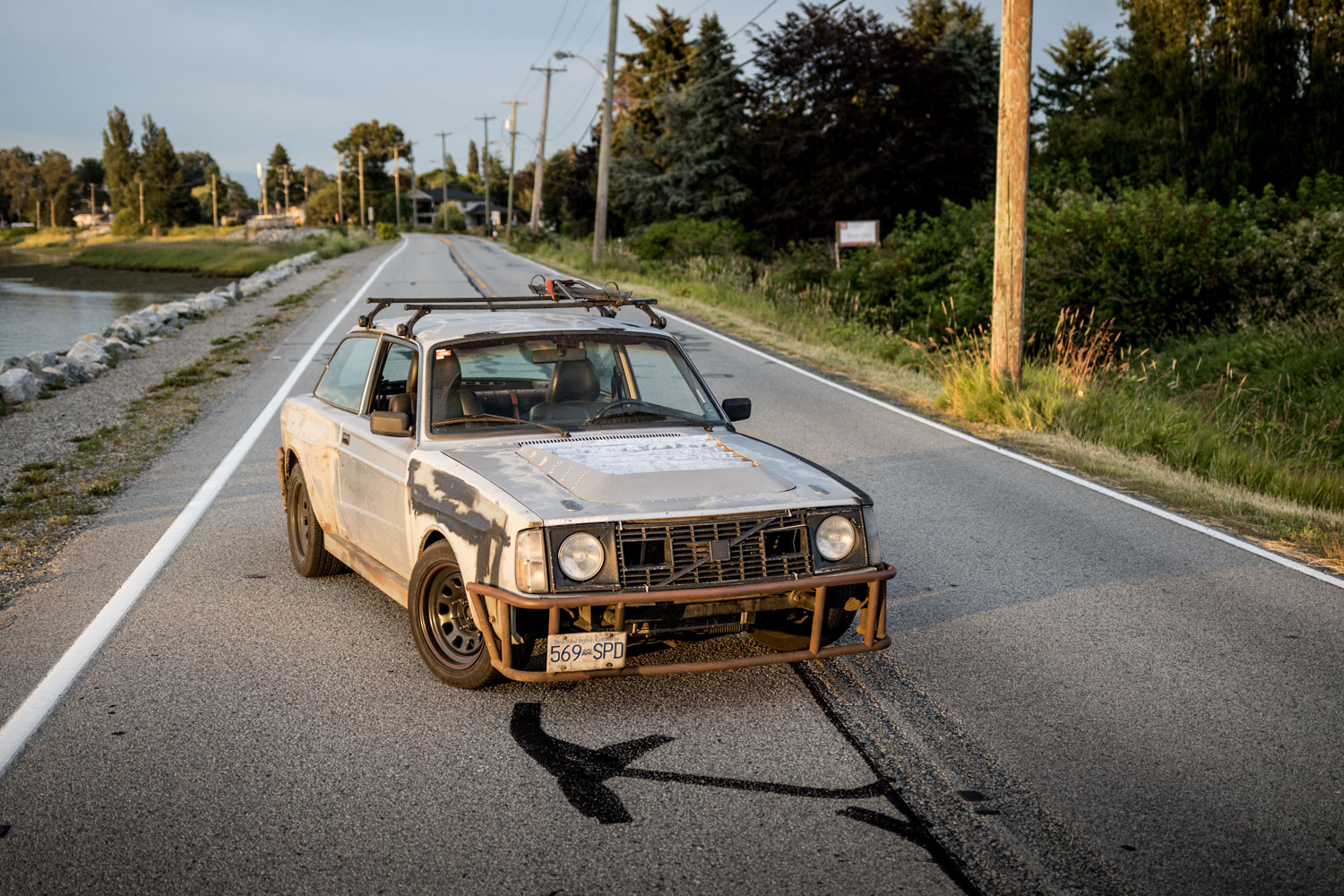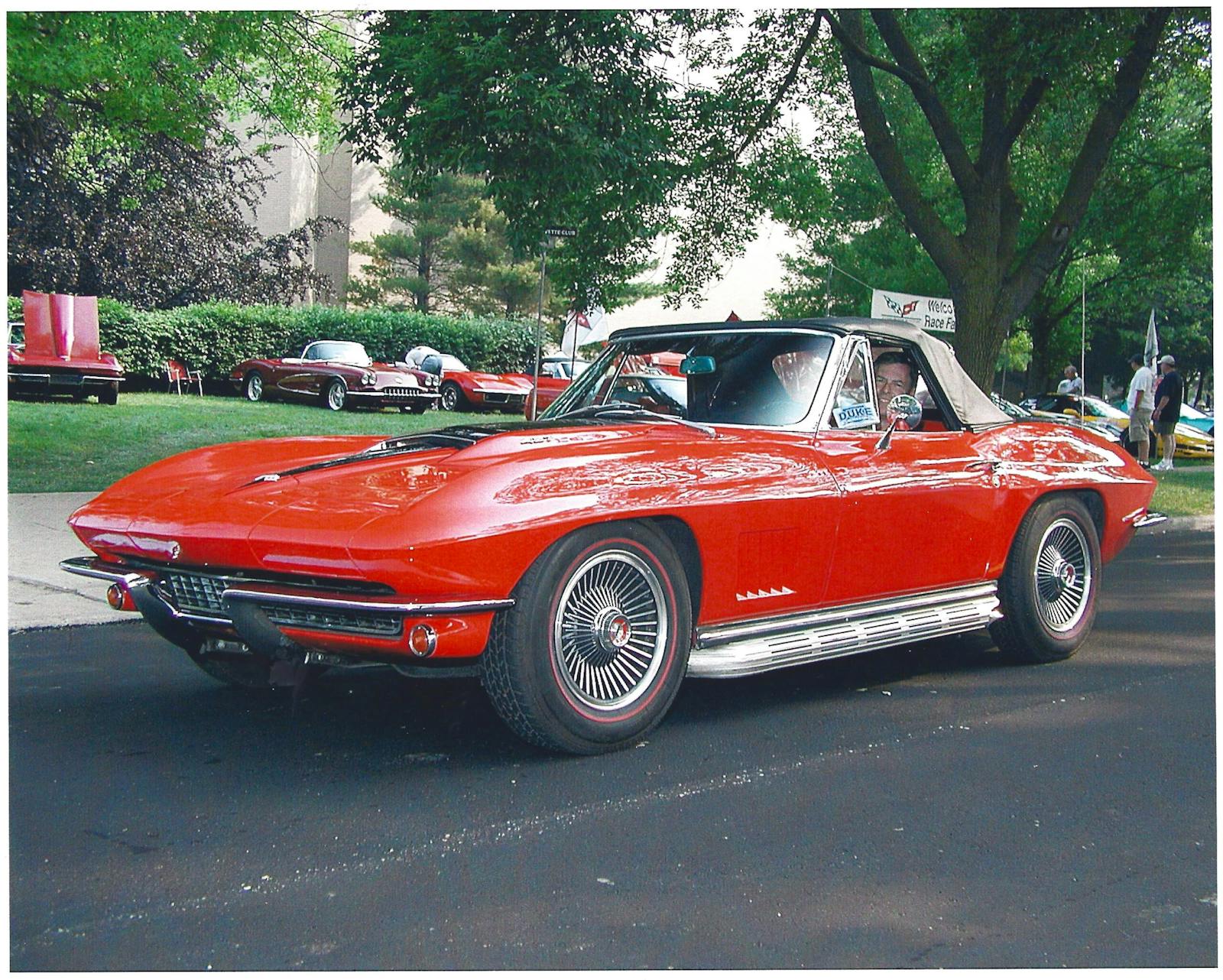This Volvo is a scarred steel beast with a 5.0-liter American heart
Volvo is a sensible Swedish company that built an empire making the world safe for the kind of people who drive around wearing cardigans. They invented the three-point seatbelt. They pioneered airbags. Volvos are sturdy, and boxy, and secure.
This one, on the other hand, appears to have contracted rabies.
On an empty rural road paralleling a canal, Phil Moul drops a gear and unleashes Ragnarök. His 1979 Volvo 242 rears back on its bare metal haunches and leaps forward on a wave of V-8 thunder. Tires brutally chirp on the shift into third and the revs climb higher—6000, 7000, 8000 rpm.
This is Led Zeppelin’s Immigrant Song as a car—specifically, the part about the Hammer of the Gods. Part Viking, part Mustang, Moul’s Volvo is a scarred steel beast with a 5.0-liter American heart. It’s got a face like a football helmet, fender flares thick enough to fend off a battering ram, and a hood that’s vented like the back of an industrial air conditioner. It’s also Moul’s daily driver, rain or shine. Sometimes he even puts a canoe on the roof.

From 20 feet away, this thing looks like Mad Max affectation. It’s the kind of vehicle people might refer to as “apocalypse-proof,” pointing out what those skeletal bumpers would do to a pack of shambling zombies when the dead arise from their graves and walk.
Get up close and actually start talking to Moul about his car, and you realize there’s no end-of-the-world posing going on here. In fact, Phil doesn’t even have an Instagram account. Instead, this is just a guy trying to build something unique to drive and enjoy.
“It’s not a rat rod!” Moul protests. “I’m just not finished with it yet.”
At 33, Moul can trace his Volvo history goes back to the family wagon. “I didn’t drink in high school,” he says, “So most of my friends’ parents like me. ‘Phil and that f—ing Volvo will get my kid home safe.’”
Parents might have been less sanguine about his later builds, which include a P1800 painted bright green and fitted with a 2.3-liter Red Block engine boosted all to hell. It put down about 300 hp to the rear wheels. “Lots of fun,” Moul says, “but not really stable or safe.”


The gap between designated driver and trying to turn every Swedish car he touches into Mjölnir on wheels can be explained by simple economics. Moul’s father was an accountant, and impressed upon his son the financial importance of knowing how to fix your cars yourself.
“I didn’t really become interested in cars until I got my first mechanic’s bill,” Moul says. “Dad always said that ideally the parts should be your only cost.”
There was also something about the difficulty of making a Volvo fast. Moul notes that buying a Volvo was a cheap ticket to rear-wheel drive, but also that the popular Civics and Mustangs were just too common. He was looking for a challenge.
That desire to do things the hard way is evident in his current machine. V-8-swapped Volvos are fairly common—the most famous, perhaps, are the supercharged wagons built for Paul Newman and David Letterman. However, most of the time the V-8 in question is a Ford 302, or the venerable Chevrolet LS. The latter is practically a drop-in, given the amount of support available in the aftermarket.
Hardly anyone chooses the Ford Coyote V-8 for engine swaps, least of all into a Volvo, because it’s such a wide engine. But when a wrecked Mustang showed up for sale locally, the mechanical challenge of getting it to fit—and the appeal of reliable V-8 power—was too tempting to pass up.
Moul is a machinist, one of two partners in a shop, and he delights in creating his own parts to fit. The transmission crossmember is a work of art wrought in aluminum. The pedal box is a one-off, as are the adapters for the Wilwood six-pot brakes. Even the top of the battery box has a special feature: “Everyone needs a good spot in the engine bay to put down a beer.”
From the outside, the Volvo is coyote-ugly. Underneath, it’s a smorgasbord of carefully machined custom pieces, each made with pride… and some made with defiance.



Looking like an extra from Fury Road makes the Volvo an easy target for the local police, who are notorious for handing out safety inspection tickets. Moul points out with pride that his modified beast has passed two separate vehicle inspections, one of them at a Volvo dealership (which probably livened up the technician’s day a bit).
On this most recent inspection, the tech insisted that the car should have a shift pattern—any shift pattern—on its gearshift, as it had one from the factory. Moul engraved an unprintable response. Reverse is F. First gear is U. Second, fourth, and sixth are Y-O-U. You can probably figure out third and fifth.
Moul is lanky and amiable, so the profanity seems a bit out of character. But perhaps it shouldn’t. Both this build and his previous Volvos are well outside the mainstream. There’s definitely a desire here to swim against the current, and bristling against pedantic authority goes along with that.

Nothing about this car is predictable. You expect it to be uncomfortable, hot, and loud. Instead, it’s a pleasant cruiser with a drive-by-wire throttle and an easy-shifting gearbox. Yes, there’s the ability to instantly explode into V-8 violence, pitting 450 hp against the relatively light ’79 Volvo chassis, but it’s a surprisingly well-made and livable car.
Weirdly, what Moul has created here is more sensible than it might appear. It’s more tractable than a cantankerous, overboosted four-cylinder. It has the leather power seats out of a Volvo 850. It’s probably not what you’d build, assuming you had the time and expertise to do so. But there’s something endlessly appealing about Moul’s audacity, as well as his evident skill in getting the details sorted out.
“It’s my car,” Moul says, “So I don’t really care what people think about it. But I do hope they appreciate the thought, maybe, that ‘Hey, someone’s gone rogue here—let’s see where it goes.’”
Don’t call this Volvo a rat rod. It’s just not done yet.










In 1964 I had a 1961 Volvo 544 with a Chevy. small block literately welded into the engine compartment, no engine mounts just angle iron welded to the frame. The engine was all hopped up including 3 carbs and had about 300 hp. The car was a real sleeper but useless on the road with all that weight on the front end and
After 12000 adventurous miles and a few spin outs I finally totaled it. Later on someone stole the engine never to be found again.